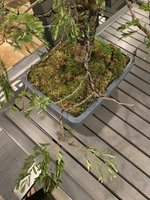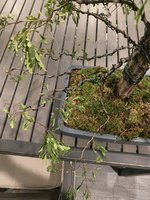Drjd
Yamadori
Good evening everybody. I was hoping someone may have some insight for me. I am relatively new to bonsai but have spent countless hours (seriously weeks of diligent work) reading books, watching tutorials and so on. I recently purchased a large pre-bonsai Lysiloma latisiliquum (common name wild tamarind, or tropical mahogany). The tree is healthy and looks great, but when spring comes I need to work on ramification. I can not find any information online as to how to prune this type of tree. The nursery which sold the tree told me to said to use the same rules as a Brazilian rain tree and the tamarind (the true tamarinds). I uploaded photos so maybe someone can provide a specific example where to cut. Ultimately a lot of the lower branches are very long and leggy. I need to bring the branches back closer to the trunk. Everything I see on Brazilian rain tree tutorials shows a tree with plenty of ramification already so cutting the branch back to a node with leaves is easy. If I cut enough to bring the branches back I will leave the branch with no leaves and just a single long branch. This may be ok, but I wanted to consult with you all first!
I really appreciate any help!
I really appreciate any help!


